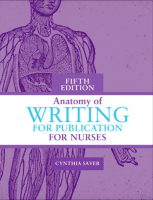Program Description
Do you work the night shift or rotating shifts? Do some of your patients struggle with sleep problems? If so, access our on-demand webinar on shiftwork sleep disorder (SWSD). More than 22 million Americans are shiftworkers, and nurses account for a large portion of them. Especially when they have long commutes and family responsibilities, shiftworking nurses are vulnerable to significant sleep loss and SWSD. According to the Centers for Disease Control and Prevention, SWSD poses serious health threats. Shiftwork, lost sleep, and SWSD can reduce your job performance, decrease quality of life, and jeopardize patient safety. And, the health threats your patients with SWSD suffer can lower their quality of life and put them at risk for injuries.
Unfortunately, many nurses and other healthcare professionals aren’t familiar with SWSD. To learn more about this disorder that can affect you, your colleagues, and even patients, take advantage of an on-demand web course, “Shiftwork sleep disorder: The role of the nurse – Understanding the consequences of SWSD for you and your patients.” This fast-paced, on-demand webinar features sleep disorder experts who discuss:
- risks associated with shiftwork
- physiologic and psychological effects of shiftwork and SWSD
- impact of shiftwork on safety, performance, and productivity
- nonpharmacologic and pharmacologic management
- assessment tools
You’ll leave the program feeling confident in your knowledge of SWSD and better able to recognize SWSD signs and symptoms in yourself, your patients, and your colleagues. As an added bonus, you’ll have access to a special online toolkit to continue your education endeavor and the opportunity to earn continuing nursing education (CNE) credit (see CNE Credit tab).
This program is supported by an unrestricted educational grant from Teva Pharmaceuticals to the American Nurses Foundation. All content underwent peer review by experts in the field.


















